 We’ve mentioned Pinterest a few times here on the blog because we at the Library use it as a resource for creating booklists for our patrons. It’s a great tool for keeping our patrons updated with the latest books; introducing them to what we call “read alikes,” books that, if you liked book X, you may also like these similar titles; and suggesting books that fit into a certain theme. All of the titles we feature on Pinterest have links directly to the catalog so that interested patrons can request those books with fewer clicks and no searching. But one thing I’ve noticed is that here on the Free For All we’ve never instructed those who may need it how to use Pinterest. I’ve had a few patrons mention how they find Pinterest intimidating, so I thought I would give a bit of a Pinterest primer to provide those of you who would like to take advantage of this tool, can do so without being overwhelmed.
We’ve mentioned Pinterest a few times here on the blog because we at the Library use it as a resource for creating booklists for our patrons. It’s a great tool for keeping our patrons updated with the latest books; introducing them to what we call “read alikes,” books that, if you liked book X, you may also like these similar titles; and suggesting books that fit into a certain theme. All of the titles we feature on Pinterest have links directly to the catalog so that interested patrons can request those books with fewer clicks and no searching. But one thing I’ve noticed is that here on the Free For All we’ve never instructed those who may need it how to use Pinterest. I’ve had a few patrons mention how they find Pinterest intimidating, so I thought I would give a bit of a Pinterest primer to provide those of you who would like to take advantage of this tool, can do so without being overwhelmed.

Let’s start with the basics. Pinterest is like a digital version of a cork board or bulletin board that people use to put ideas they like, things that inspire them or helpful hints they’d like to remember or refer to later. It is an image-based social media tool, so unlike Facebook or Twitter, what you respond to and view are pretty much exclusively pictures with minimal to no words. If you like a picture you can “pin” it, i.e. click on it and save it to a board. You can organize those pins onto different boards depending upon themes. When you go to the Library’s Pinterest page, we have many boards on the site, each with its own theme. Each of our pins is almost exclusively the image of a book cover whose title will relate to that board.
Unfortunately (and this wasn’t the case when the Library first started using the site), you need to have a Pinterest account in order to click on pins. Singing up is free and all you need is a valid e-mail address. You will be asked to pin a few things and create a board to get started, but after the initial setup, you don’t have to pin anything unless you care to do so. If you choose to follow either a pinner or a board, new pins posted by these sources will appear in your home screen. I think this is where people tend to get overwhelmed because it is an uncurated blast of information. The good news is that once you have a Pinterest account, you can visit the site of pinners (like the Peabody Library, or other libraries who have great boards) and see what they have to offer without reviewing your feed. Simply go to the direct link for their site (ours is www.pinterest.com/peabodylibrary) and you can see what might be new there. You can browse through boards that interest you by clicking on that specific board. You don’t need to pin books in order to request them. Simply click on the book cover to open the pin, then click the book cover again to be taken directly to the catalog so you can request the book your interested in. You don’t even need to follow the library (though we’d love it if you did) in order to access our boards or request books.
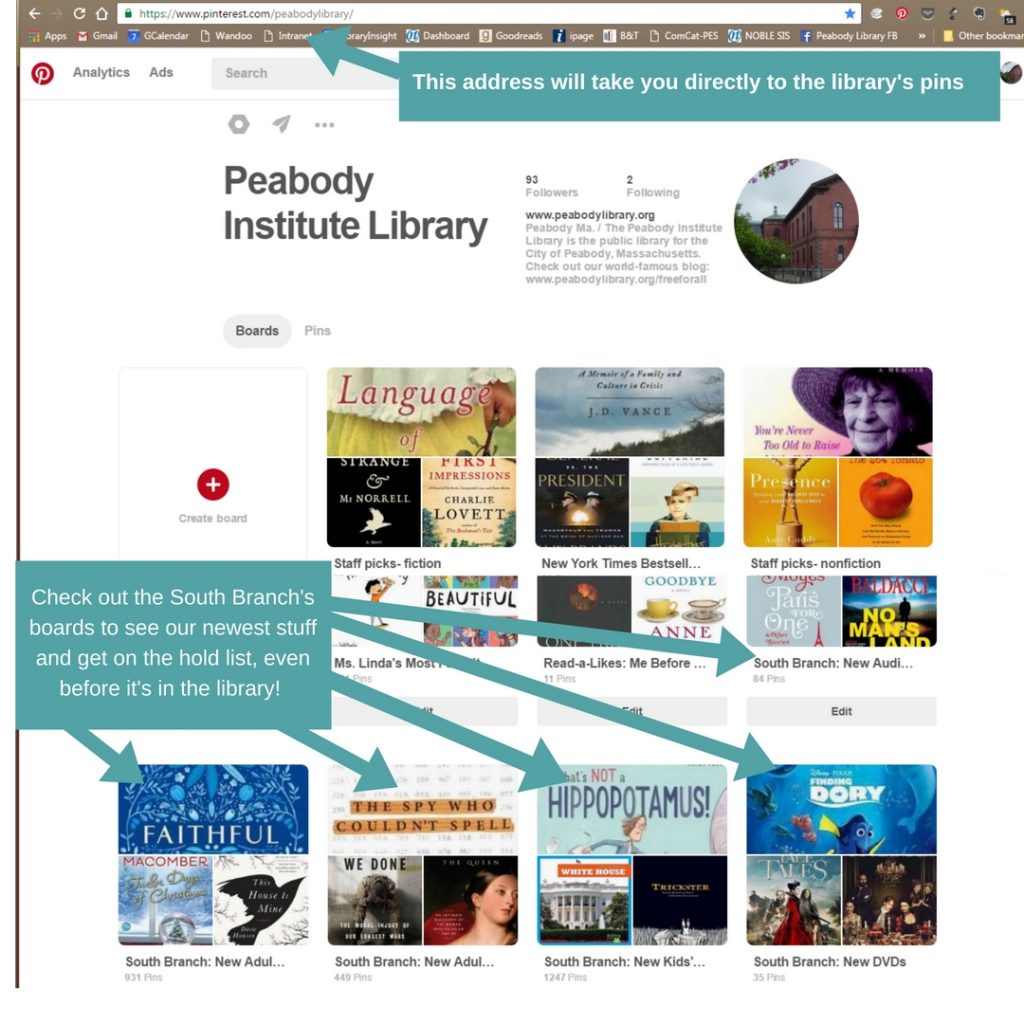
If you decide pin stuff, you can use Pinterest as a de facto hold list by creating a “things I want to read” list (or “things I want to see” list as we have movies listed on Pinterest, too!) if you see things you like but don’t want to read them right away; but don’t forget you can also suspend your holds in your library account. If you don’t want Pinterest to bombard you with notification e-mails (this is a BIG issue for many of us with bloated inboxes) you can make sure Pinterest won’t send you notifications in your settings:
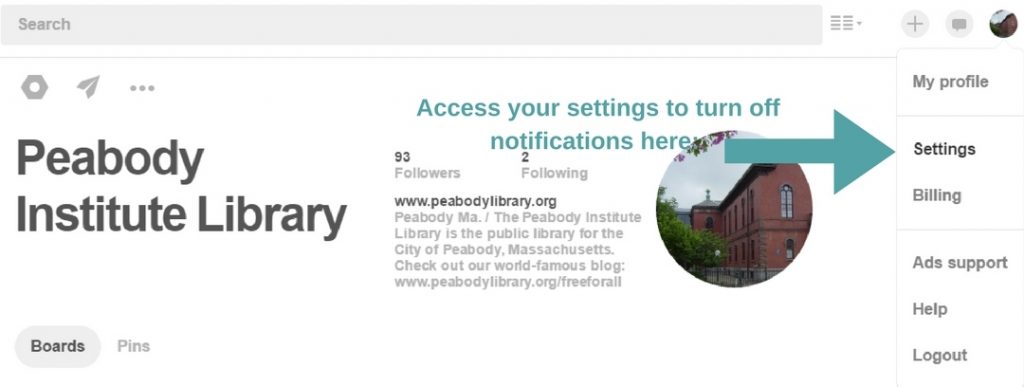
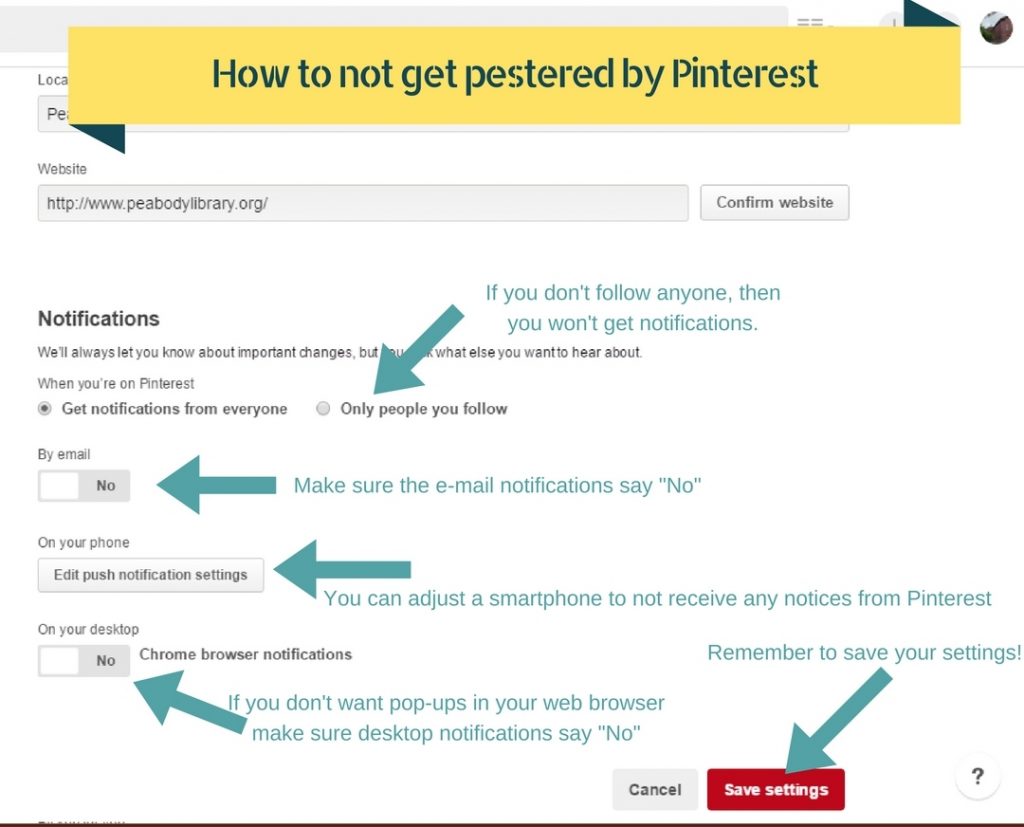
I wanted to offer this post in the hopes that those who are vaguely aware of Pinterest and the fact that the Library uses it as a tool would be more comfortable discovering what we have to offer there and know that Pinterest can be a fairly passive form of social media that doesn’t have to infringe upon what may be already overloaded screen time. If you do use Pinterest, in any capacity, let us know how you use it and how we might make our site better for you! Till next week, dear readers, know that all of the library’s tools are here for you anytime.

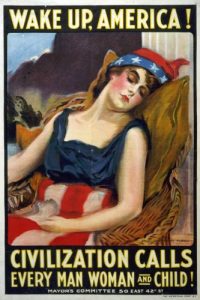
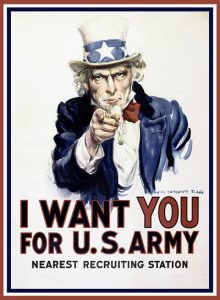
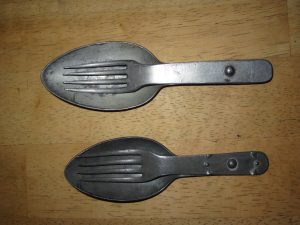

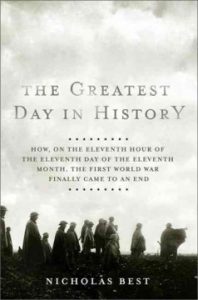 The Greatest Day in History
The Greatest Day in History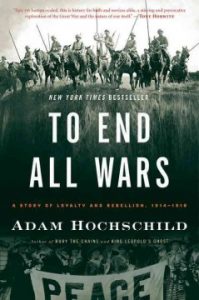 To End All Wars : A Story of Loyalty and Rebellion, 1914-1918
To End All Wars : A Story of Loyalty and Rebellion, 1914-1918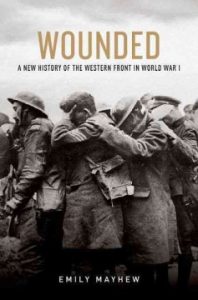 Wounded: A New History of the Western Front in World War I
Wounded: A New History of the Western Front in World War I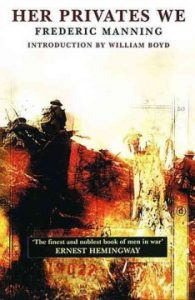 Her Privates We:
Her Privates We: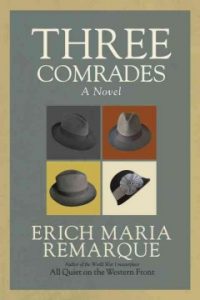 Three Comrades
Three Comrades



 November has arrived and with it, longer nights, cooler days and fading colors on the trees. But November doesn’t always have to be about withering or fading. Sometimes, November can be about creation and the making of something long percolating, and that is precisely what NaNoWriMo is about.
November has arrived and with it, longer nights, cooler days and fading colors on the trees. But November doesn’t always have to be about withering or fading. Sometimes, November can be about creation and the making of something long percolating, and that is precisely what NaNoWriMo is about.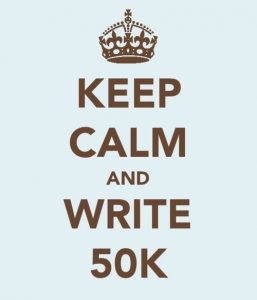
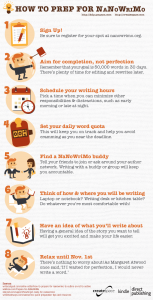
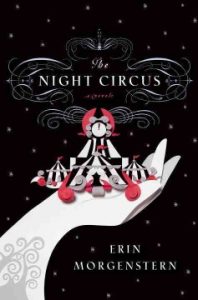
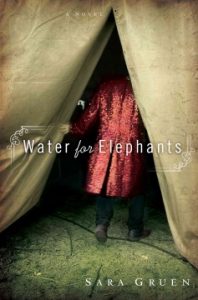
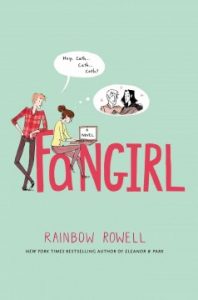
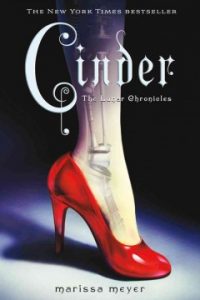
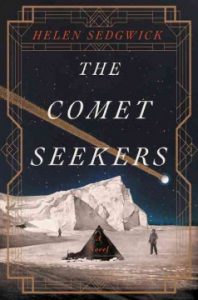 The Comet Seekers
The Comet Seekers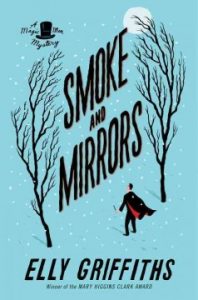 Smoke and Mirrors
Smoke and Mirrors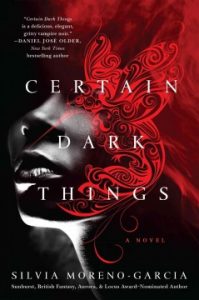
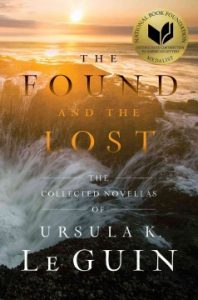 The Found and the Lost: The Collected Novels of Ursula K. Le Guin
The Found and the Lost: The Collected Novels of Ursula K. Le Guin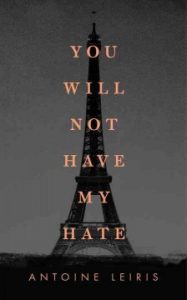 You Will Not Have My Hate
You Will Not Have My Hate

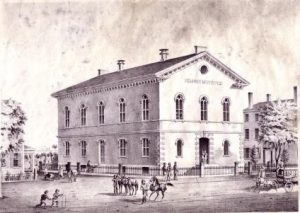
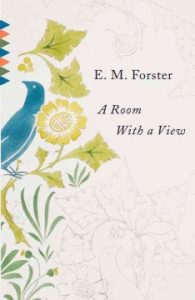
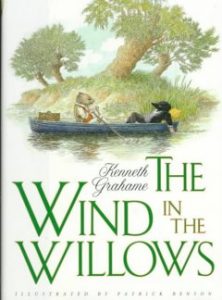 The Wind in the Willows
The Wind in the Willows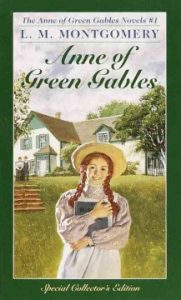 Anne of Green Gables
Anne of Green Gables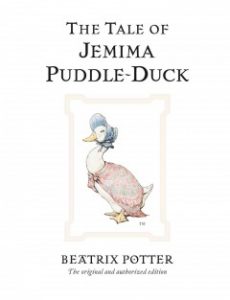 The Tale of Jemima Puddle-Duck
The Tale of Jemima Puddle-Duck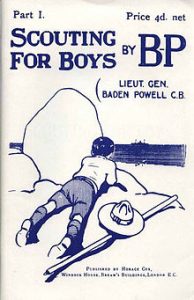 Scouting for Boys
Scouting for Boys